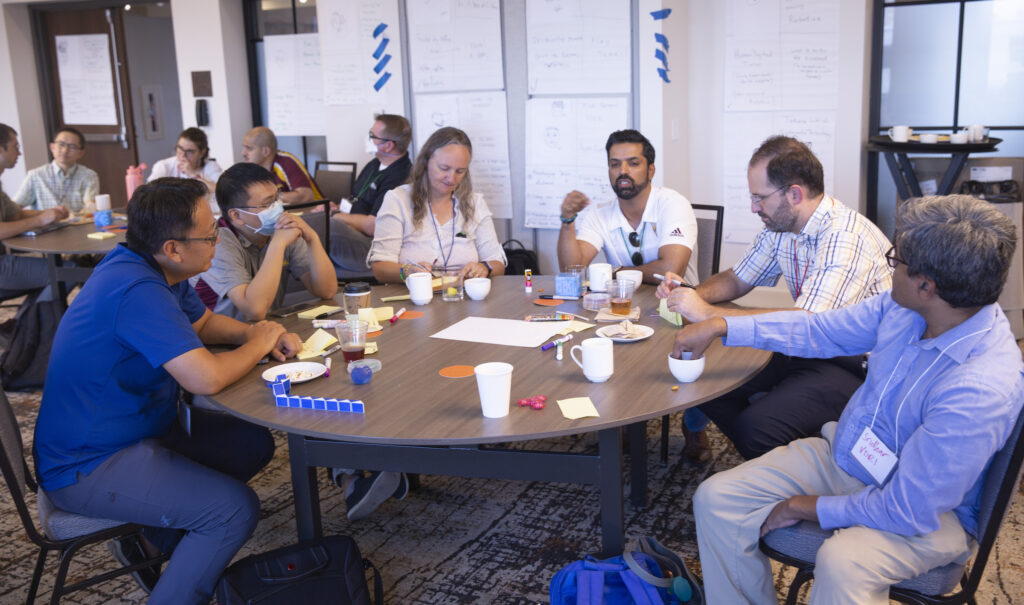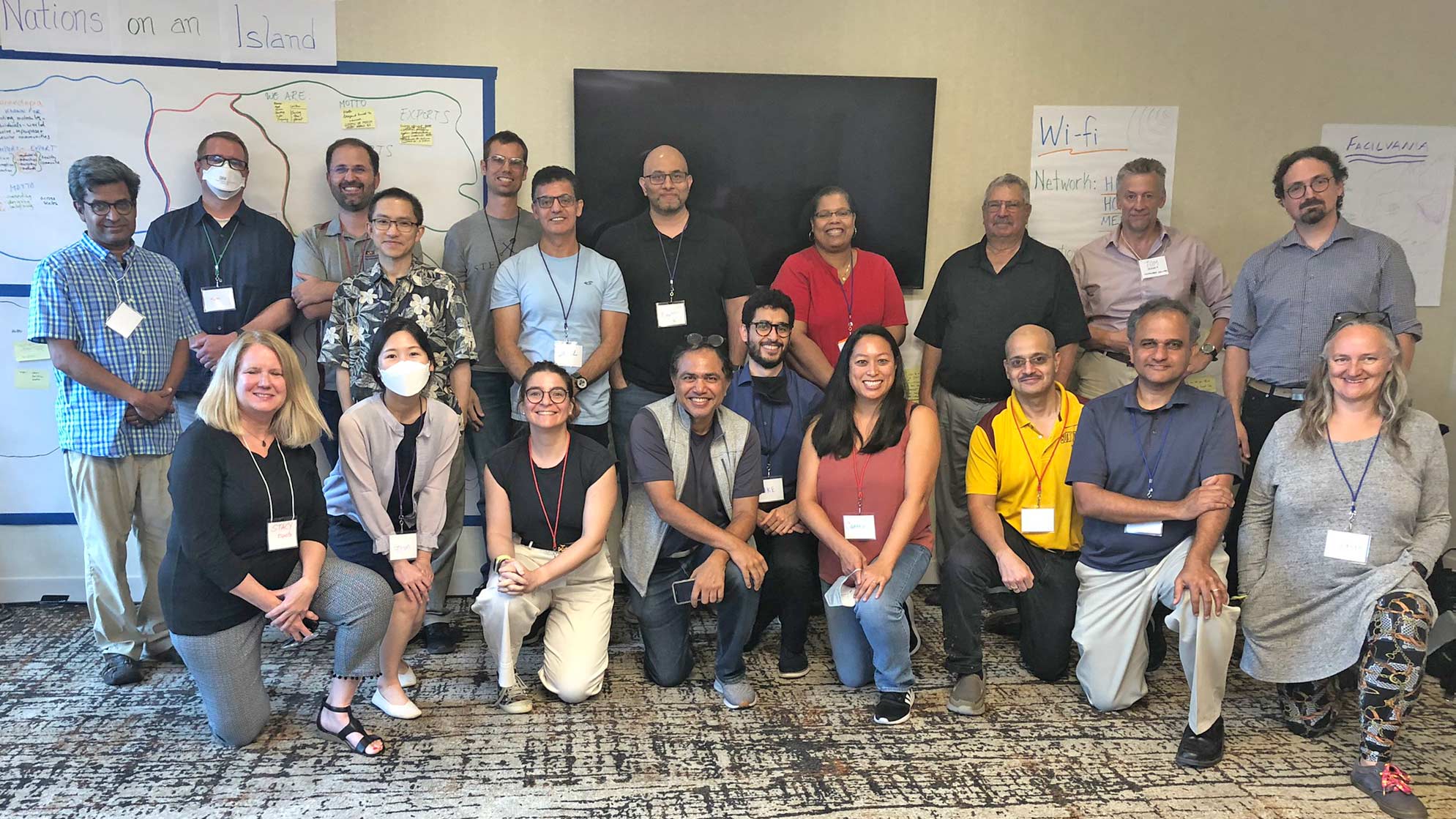Faculty collaboration fosters potential research after Ideas Lab event

The Ira A. Fulton Schools of Engineering has more than 350 tenured/tenure-track faculty, and so it is understandably not easy for them to fully know each other and the details of their research when they are spread out over seven schools and two campuses.
That is why the Office of the Vice Dean for Research and Innovation organized a first-of-its-kind “Ideas Lab” over the summer, with faculty participating from across the Fulton Schools and even other schools at Arizona State University.
The experience allowed both junior and senior faculty members to get to know one another better, even if they have each been at ASU for many years.
At the Ideas Lab, faculty engaged in a series of brainstorming and workshopping activities led by facilitators from Knowinnovation. The focus was on collaborative, interdisciplinary, and creative thinking for solving contemporary problems.
For example, faculty devised imaginary nations and shared their imports, exports and national mottos. They also brainstormed ideas for “WIBGI”, or Wouldn’t It Be Great If…, ideas. Ultimately, faculty formed teams and delivered preliminary presentations on collaborative research proposals.
“I can see the value and potential of the outcomes of these events,” Professor Yongming Liu says. “The Fulton Schools needs to cultivate more transdisciplinary research through nonconventional meeting-like settings. I believe that it will eventually enable team formation, idea generation, and leadership training for high-impact projects for the community.”
Liu’s experience allowed him to get to know people and ideas from very different perspectives, and he learned some new techniques and methods out there that could potentially change the field he is working on.
“There are some topics I never thought could be leveraged to my current topic,” Liu says. “And now, I can think of several faculties to collaborate with on new directions.”
The Ideas Lab was designed to help faculty develop research ideas and collaborations that could result in funding. The next step will be providing financial support to the teams to build out a large grant proposal such as an NSF Engineering Research Center.
